Review: 2014 Ford Focus ST (With Video)

Hot hatches are all the rage in Europe but represent a fairly small segment of American consumption. The formula is fairly simple, you take a compact hatchback, insert a turbocharged engine, stiffen the springs and add an anti-roll bar that can lift the inner rear wheel in corners if you really push it. The result is the polar opposite of a pony car.
Exterior
For 2014, the American hot hatch shopper is spoiled for choice. There are a whopping two options: the 2014 Ford Focus ST and the 2014 Volkswagen GTI. If you’re patient enough, VW plans on releasing a new GTI for the 2015 model year and the Mazda rumor mill is rife with 2015 Mazdaspeed3 assumptions. I must therefore rule the Focus ST the most attractive hot hatch in America and put the comparatively boring GTI in last place, or second. However you want to look at it. For performance duty Ford takes the already handsome Focus, lowers it by nearly half an inch and swaps in some new wheels, a front bumper, tweaked spoiler, rear valance and exhaust tips. If you haven’t noticed by now, there is no sedan variant of the Focus ST. Sorry America.
Although the parts list is short, I found the transformation impressive. I haven’t warmed to the Euro nose that the current generation Focus wears while the ST’s more conventional single grille look manages to be both more grown up and more aggressive when compared to the donor car. (Don’t worry, you can get your Focus in colors other than “Tangerine Scream”.) The ST shares hoods with the lesser Focuses (Foci?) there is an oddly large gap between the hood and front bumper that is so uniform (and is on every ST model I have seen) that it must be intentional, however distracting. The reason is that the regular model’s hood doesn’t mate directly with anything as it is styled to be the upper part of the front grille. I have a feeling that if and when the Mazdaspeed3 lands, it will take the crown as I find the Mazda3 the most attractive entry in the compact hatchback segment.
Interior
Like the Volkswagen GTI, the first thing you will notice about the Focus when you hop inside will be the very European color palate. In other words, black. The soft injection moulded dashboard combines with the black headliner, black carpets and predominantly black upholstery to create a very Germanic interior. All Focus models sport a double-bump style dashboard with the infotainment positioned in a prominent position and the ST trim tops off the binnacle with standard gauges for oil temperature, oil pressure and turbo boost. This is the same cabin that European shoppers get with one exception: the Recaro seats aren’t standard on our side of the pond. Neither is that 8-inch touchscreen.
Although the ST starts at $23,625 my realistic base price jumps to $25,845 by adding the “ST2” package which I consider essential. This package adds the 8-inch screen, automatic climate control and the Recaro seats that you see in all the photos and reviews of the Focus ST. The base seats lack the aggressive bolstering or the exceptional comfort of the half-leather Recaro thrones. ST2 shoppers can opt for two-tone seats (as seen in our tester) in blue, yellow or black-on-black. Checking the ST3 box brings the ST up to $28,000 and adds completely leather faced seats (black only), seat heaters, HID headlamps, LED daytime running lamps and standard navigation software.
During my week with the ST I put over 1,100 miles on the Tangerine Scream including a 650 mile road trip. The Recaro thrones proved to be supportive, comfortable and superior to the GTI’s seats for long road trips. Unfortunately the rear passengers weren’t as happy since the Focus has a fairly cramped rear seat. Adding the Recaro seats to the Focus seems to drop the rear seat room by a hair as well making the Focus a great deal tighter than the GTI despite the Focus being the longer car by six inches. Where do those inches go? Some of them are consumed by the Ford’s longer nose, but plenty can be found in the ST’s 50% larger cargo hold.
Since I mentioned the Mustang earlier, that tight rear seat is one of the main reasons you’d select a Focus ST over a V6 ‘Stang. Despite being smaller than a GTI, the ST offers two extra doors, three more inches of leg room and a 5th seat belt. In addition to the added passenger room the Focus also boasts 10 more cubic feet of widget storage in the back.
Infotainment
Base ST shoppers get basic entertainment to go with their basic seating. All STs come standard with a 6-speaker audio system sporting a 4.2-inch color LCD, SYNC voice commands and a sea of buttons. The unit is housed in the same binnacle as the 8-inch system so there’s plenty of blank space to remind you that you didn’t pony up for the MyFord Touch system. The ST3 package that is my realistic base for the ST solves this by removing the button bank and inserting the screen you see above. Bundled with the resistive touchscreen is an upgraded 10-speaker Sony speaker system with a subwoofer and a center channel. Sound quality in the 6-speaker system was disappointing while the Sony system impressed. One thing to know if that the Sony system tends to have exaggerated treble and bass tuning by default but it is adjustable.
This is about the time when I usually comment on MyFord Touch being somewhat sluggish and suggest that the competition has an acceptable alternative. The alternative however is Volkswagen’s ancient infotainment lineup. All GTIs share the same 8-speaker sound system that slots between Ford’s base and up-level system in both speaker count and sound quality but everything else pales in comparison. The GTI has no SYNC-like voice command system in any model and the base GTI doesn’t even get a color LCD in the cabin. The Driver’s Edition GTI gets VW’s low-cost navigation unit which, when compared to MyFord Touch, is like taking a Palm Pilot to an iPad fight. Hopefully VW will up their game for 2015, but more than likely Ford’s only real infotainment competition will come from Mazda’s slick MazdaConnect system.
Drivetrain
The last Focus ST was powered by Volvo, a logical choice since Volvo’s S40 and Ford’s Focus were cousins to begin with. This generation Focus is 100% Ford. Instead of the oddly-alluring 2.5L five-cylinder, we get a 252 horsepower tune of Ford’s 2.0L EcoBoost engine cranking out 270 lb-ft of torque. (There is a bit of confusion on the HP numbers, in the video I mention Ford’s initial numbers of 247 HP and 266 lb-ft which was later updated to 252/270. Apparently running 87 octane gasoline in your ST will yield 247 while 93 will get you 252.) This is the same four-cylinder turbo used in the Ford Edge and Taurus except that the boost has been cranked up and it is mated to a 6-speed manual transmission. (As far as we can tell this is no longer the Volvo M66 transmission manufactured by Getrag.)
Drive
Compared to the VW, the Focus is 52 ponies more powerful and serves up 63 more lb-ft while the Mustang V6 beats the Focus by 48 horsepower and 10 lb-ft. As you would assume with numbers like that, the Mustang is faster t0 60, but thanks to the turbocharger on the Focus the difference in our testing was just 1/10th of a second and is more down to driver skill and traction than vehicle output. The VW on the other hand can’t makeup for the power deficit by being 100lbs lighter and was 3/10ths slower.
The big difference between a Mustang and a hot hatch is of course which wheels are getting the power. Because the ST funnels all its power through the front wheels, torque steer is a genuine concern. Rather than limit engine power in 1st and 2nd like Mazda did with the old Mazdaspeed3, or use a limited slip differential like Honda uses on occasion, Ford decided to program the electric power steering to compensate. Coupled with the EPAS system is a stability control system programmed to torque vector power across the front using the car’s large front brakes. The system works passably well but not as well as the Ford’s “Revo Kunckle” which they use on their larger cars. Due mostly to the greater output, torque steer in the ST is more pronounced than in the GTI, but much less noticeable than in the old Mazda. I’ve always found mild torque steer in a fast front-driver an entertaining phenomenon so it never bothered me.
Helping the steering tendencies is a variable ratio steering rack that uses a quick 1.8 turns lock to lock vs 2.1 in the GTI, 2.8 in the standard Focus and 3.1 in the V6 ‘Stang. Thanks to the ratio the ST feels very nimble and eager to change direction. Unless you need to U-turn of course which is when you will discover that this tiny hatch has a nearly 40-foot turning radius.
Thanks to a light 3,200 pound curb weight (100lbs heavier than the VW but 300lbs lighter than a V6 Mustang), 235-width Eagle F1 Asymmetric tires and a well tuned suspension, the Focus ST sticks to the road like glue. TTAC doesn’t have access to a skidpad to confirm or deny the Mustang trouncing Gs the plucky hatch can pull, but after a week making passengers sick on winging mountain roads I’m a believer. What makes the Focus more impressive is how neutral the car feels despite being a front-heavy front-driver. It’s more lively, less civilized but more rewarding to drive than the GTI. The V6 ‘Stang does give you rear-wheel- drive dynamics and more shove in a straight line, but I’d be willing to bet I’d be faster around a track in the Focus ST.
What surprised me about the Focus the most however was how livable it is. The suspension is firm but never harsh and my spine didn’t revolt on a 5 hour drive to Los Angeles. Cabin noise was high at 76 dB but that’s not far from the last Golf I measured and average for the economy car segment. Thanks to an active noise generator that opens a valve to pipe sound into the cabin from when at full throttle, normal driving happens without the incessant droning of a Fiat Abarth. While the Tangerine Scream paint job and yellow trimmed seats scream “boy racer”, the truth is the Focus is quite the grown up. With a starting price some $1,300 less than a GTI the Focus delivers a solid value proposition. Fully loaded the difference narrows to less than a grand in cash but more than $3,000 when you factor in the Ford’s greater feature content. While I’m sure that 2015 will bring a VW GTI with more refinement and an improved interior, VW has confirmed the ST will still be the horsepower champion and likely the value leader as well. Compared to that RWD Ford on the lot, the pony car is less expensive but less practical as well. For the cost difference between the Mustang and the ST, you could buy all manner of performance mods for your pony to compete with the ST, but I have a feeling I’d still buy the Focus. For 2014 Ford’s hot hatch is without a doubt the hottest hatch on sale in America, but with Volkswagen planning on sending their 290HP Golf R to the USA and Ford’s own high-power Focus RS rumored, things are just starting to warm up.
Ford provided the vehicle, insurance and one tank of gas for this review
Specifications as tested
0-30: 2.3
0-60: 5.95
1/4 Mile: 14.36 Seconds @ 98.5 MPH
Average Observed Fuel Economy: 25.7 MPG over 1210 Miles
Sound Level at 50 MPH: 76.4 dB

More by Alex L. Dykes
Latest Car Reviews
Read moreLatest Product Reviews
Read moreRecent Comments
- Analoggrotto Kia Tasman is waiting to offer the value quotient to the discerning consumer and those who have provided healthy loyalty numbers thinks to class winning product such as Telluride, Sorento, Sportage and more. Vehicles like this overpriced third world junker are for people who take out massive loans and pay it down for 84 months while Kia buyers of grand affluence choose shorter lease terms to stay fresh and hip with the latest excellence of HMC.
- SCE to AUX That terrible fuel economy hardly seems worth the premium for the hybrid.Toyota is definitely going upmarket with the new Tacoma; we'll see if they've gone too far for people's wallets.As for the towing capacity - I don't see a meaningful difference between 6800 lbs and 6000 lbs. If you routinely tow that much, you should probably upgrade your vehicle to gain a little margin.As for the Maverick - I doubt it's being cross-shopped with the Tacoma very much. Its closest competitor seems to be the Santa Cruz.
- Rochester Give me the same deal on cars comparable to the new R3, and I'll step up. That little R3 really appeals to me.
- Carson D It will work out exactly the way it did the last time that the UAW organized VW's US manufacturing operations.
- Carson D A friend of mine bought a Cayenne GTS last week. I was amazed how small the back seat is. Did I expect it to offer limousine comfort like a Honda CR-V? I guess not. That it is far more confining and uncomfortable than any 4-door Civic made in the past 18 years was surprising. It reminded me of another friend's Mercedes-Benz CLS550 from a dozen years ago. It seems like a big car, but really it was a 2+2 with the utilitarian appearance of a 4-door sedan. The Cayenne is just an even more utilitarian looking 2+2. I suppose the back seat is bigger than the one in the Porsche my mother drove 30 years ago. The Cayenne's luggage bay is huge, but Porsche's GTs rarely had problems there either.




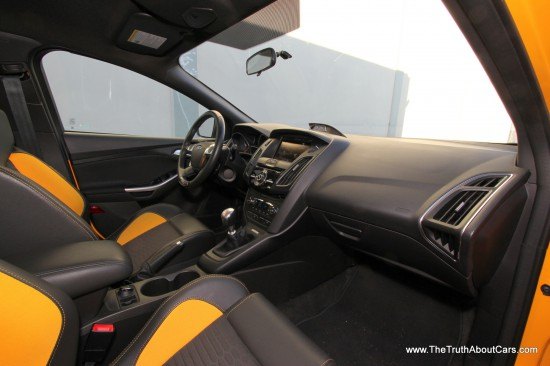




































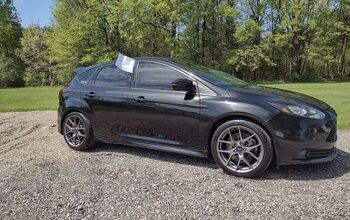

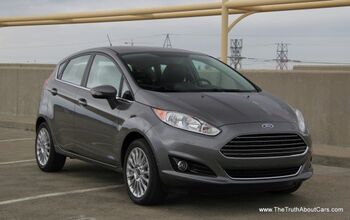
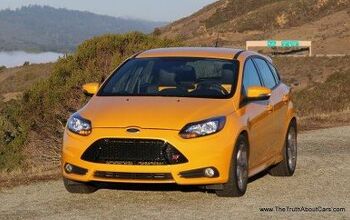
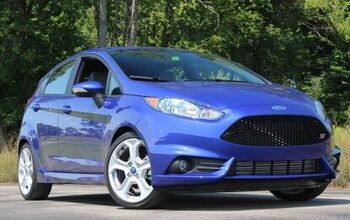










Comments
Join the conversation
My only experience with a Focus ST was 5 minutes in a 2013 during one of Ford's little events they advertised at the MN state fair. I think it was the EcoBoost challenge or whatever they were calling it. I have to say that the 5 minutes I spent with it were fun, but the clutch engagement kept tripping me up. I was trying to no-gas it up to the start line of their little 2nd-gear-only circuit and kept stalling. I don't know if the engagement is too low, I wasn't used to the car (my DD is a 13 Focus SE), or just what my issue was, but it was hard to get moving. This could just be an artifact of me being slightly tired and light-headed (making me a little shaky), coupled with a fairly new car >600 miles on the clock. Could anybody else comment on the clutch feel as compared to your DD? Perhaps I'm imagining things?
One of these days, perhaps auto reviewers will use real world prices instead of just MSRP numbers. The Focus and Mustang are both seeing huge discounting and incentives. The prices I got on them are: Focus ST - with mid line package $21,830 Mustang V6 Premium plus performance package $21,950 To both are added $500 dealer fee and taxes that vary. There may be a tweak or two needed to make them totally identical in "kit", but you can see they are essentially the same price. Basically, buy what you want, if they perform and function similarly, odds are they will cost about the same. Especially if from the same manufacturer. But always check real prices, not MSRP, especially on American cars.